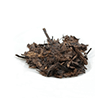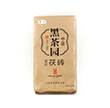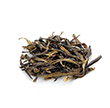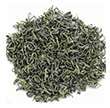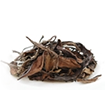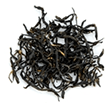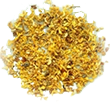How To Buy Chinese Tea - By Daniel Lui
If you’ve ever visited a Chinese teashop, you’ll notice hundreds of different types of teas, each with various grades of quality and pricing. How do you know which one to buy? This little guide will help you learn how Chinese tea is made, about the different types and grades, how to store your tea and shopping tips that will save you money and enhance your overall enjoyment of tea.
One Plant - Thousands Of Teas!
Believe it or not, almost all Chinese teas are made from one plant species, known as Camellia sinensis. It is an evergreen shrub that can grow into a small tree and is native to Southeast China. The plants can live for up to 100 years and the leaves are harvested year round. (The other plant from which tea is made is Camellia assamica from India and most tea in the world comes from these two sub-species of the Camellia plant).
Over the centuries, Chinese manufacturers have been able to produce thousands of varieties of tea from this single plant, each having its own unique flavour. This has been achieved by controlling 4 basic elements:
- Region where the plant is located; soil and altitude are key factors
- Time of harvesting the leaves - early, middle or late in each season
- Method of harvesting – picking only buds or buds with leaves
- Processing – withering, rolling, oxidizing, drying, fermenting and aging
- The fifth element that affects the flavour of tea is how it is prepared just before drinking.
Preparation – type and quality of the teapot, temperature and quality of the water, brewing times.
One thing that cannot be controlled is the weather and this has a major effect on tea plants and the flavour of the teas they produce. A tea manufacturer may produce the same type and grade of tea for decades but each year the tea may have a slightly different taste. Each spring, tea-lovers eagerly await the new picking of Tie Guan Yin (also known as Gun Yam, Iron Buddha, Buddha of Mercy and Chinese Oolong) to sample its fresh and fragrant flavour and aroma and compare it to last year’s pick.
Tea Categories
Chinese teas are categorized by one of 4 methods of processing:
Non-oxidized
Non- oxidized Chinese teas are known as green teas, white teas and yellow teas (which are very rare). The leaves are simply picked, then dried and then packaged. The leaves may be steamed, flattened, twisted or rolled into little balls to accentuate the tea’s fragrance or taste. This process permits little oxidization of the leaves and retains the green taste of the leaves. Contrary to popular belief, Chinese green teas may contain more caffeine that Chinese black teas but both are less than the black teas consumed in the West that originate from India, and significantly less than coffee (see below for a fuller discussion on caffeine).
Oxidized
Oxidized teas are known as Black Teas in China (not to be confused with the teas which are known as Red Teas in China but called Black Teas in the West). The flavour is developed by keeping the leaves warm and moist for a few hours which turns them black as the chemicals in the leaves break down by reacting with the air. The leaves are then dried by a variety of methods which affects the taste and then graded.
Semi- oxidized
These are the Oolong teas that are sometimes called semi-green or blue-green tea. The process is the same as the oxidized type above with the time of oxidization adjusted to make the tea taste more green or black.
Post-fermented (Aged)
This is the famous Pu-Erh tea (Bow Lay in Cantonese) from Yunnan province. After processing it may be compressed and stored in cool dry cellars, sometimes for many years before it is made available for purchase. This aging has a further mellowing effect and adds complexity to the flavour.
In addition to the 4 basic categories above, there are 2 additional ones:
Smoked Teas
As the name suggests, a distinctive flavour is imparted to the leaves by exposing them to the smoke from different types of burning wood. Smoked teas can range from lightly to heavily smoked. Examples are Monkey Pick Tea, some varieties of Da Hong Pao and Lapsang Souchong.
Scented or Flavoured Teas
These come in 2 types: natural and artificial and there are high and low grades of each type. High grade Dragon Pearl Jasmine tea uses jasmine flowers which are overlaid on top of the tea leaves during lengthy processing, imparting a delicate flowery flavour. Lower grades use an artificial flavouring. And a shorter duration for processing. Tea flavoured with lychee fruit is also very popular and there are some high grade teas of this type available, but beware of most scented teas which use low grade tea and artificial flavours.
How Tea Is Made
Withering
Picked leaves are spread out (inside and/or outside in the sun) to soften the cell walls of the leaves. This softens the leaves by drawing the moisture to the surface for evaporation, begins natural enzymatic oxidization and sets up the next stage of processing. This also reduces the grassy taste of tea leaves.
Tossing/Bruising (Turning Over)
Known as “Shaking” in Chinese, because in the old days, the leaves were simply shaken in a wicker basket. Today, this step is done with the aid of machines to further break down the leaf structure by mechanical means (as opposed to chemical means as done in Wilting”). This improves oxidation and mixes chemical elements from the stems with the leaves, removing bitterness and balancing the flavour of the tea.
Oxidization (Partial and Full)
This step used in Oolongs and Black Teas continues the natural process of oxidization by allowing the leaves to rest after the Wilting or Tossing/Bruising (Turning Over) steps. The time allowed determines the amount of oxidization for the tea being made. At this point, the leaves turn to a darker green or even a red colour, due to the breaking down of the cell structure of the leaves. It is at this stage where the tea begins to develop its grassy, flowery or fruity taste characteristics.
“Kill-Green” (also known as Fixing”)
Stops oxidization and growing processes within the leaves without damaging them. Steaming the leaves, hand pressing in a hot pan and baking techniques are used. This also sets up the next step for Rolling/Forming the leaves.
Rolling/Forming
Leaves are passed through hot and/or cold rollers to slightly break down the leaves, which intensifies the tea flavour and establishes the shape of the leaves.
Drying
Establishes the final moisture content of the leaves, stops oxidization, prevents mould growth, removes any remaining grassy leaf taste and develops the tea’s aroma. Sun drying, pan heating and hot air methods are used.
Firing
(Oolongs) Various methods of roasting in a pan or a basket with charcoal or electric heat are used to give a smoky flavour or a fruity characteristic.
Piling/Heaping
(Ripe/Shou Pu-Erh Tea) Leaves are heaped into a pile, moistened, covered and allowed to rest in a warm environment which speeds the natural fermentation process. The heat caused by fermentation “cooks” the leaves, giving this tea its unique mellow taste and distinct dark colour.
Steaming/Shaping
(Pu-Erh Tea) Leaves are steamed and made into their final shapes before packaging. This includes bricks (Juan Cha), cakes (Beeng Cha), bell shapes (Toa Cha) and mushroom shape (Moa Gu Taow).
Types Of Chinese Tea
The following list is just a sample of some of the most popular teas appreciated by experts and tea-lovers around the world and will help you understand the different types and grades.
Chart - Chinese Teas by Oxidization Type
|
GREEN/WHITE TEAS |
Very fresh green taste with slightly grassy and nutty overtones |
|
|
|
Smooth, mellow and rich green leaf taste |
|
|
|
Rich perfume fragrance and flowery taste |
|
|
|
Smooth, creamy and buttery green taste, slightly flowery |
|
|
BLACK TEAS |
Unique fruity taste with a touch of peach |
|
|
|
Dark, rich and smoky |
|
|
OOLONG TEAS |
Tie Guan Yin (also called Gun Yam, Iron Buddha, Buddha of Mercy, Chinese Oolong) |
Spring Pick: Flowery fragrance and sweet taste Fall Pick: Light fragrance and deep, complex flowery taste |
|
|
A wonderful ‘everyday’ tea - Fresh, slightly fruity and flowery aroma and taste |
|
|
|
Da Hong Pao Cilff Oolong (also called Big Red Robe)
|
3 types: Lightly oxidized, Lightly Roasted, Full Roasted Lightly oxidized has a rich and complex green taste Lightly Roasted has a light and complex smoky taste Full Roasted has a rich smoky taste |
|
|
2 types; Honey and Flower Teas. Full and rich tastes and aromas |
|
|
|
Roasted, full smoky taste |
|
|
POST FERMENTED TEAS
|
Pu-Erh Sheng (also called Raw, Un-Cooked, Sheng, Green Health Tea Pu-Erh Shou (also called Cooked Tea, Ripe)
|
Comes in sheng and shou varieties. Older teas have smooth, rich and earthy tastes with complex overtones ranging from plums to dates to chocolate. Stored for many years in cool, dry cellars which has a further mellowing effect and adds smoothness and complexity. Sold like vintage wine, some ”vintages” are very rare and expensive.
|
Chart - Chinese Teas By Flavour Types
The flavours, tones and notes indicated here can be found in many teas in different categories, this is a general guide only
|
FLOWERY
|
Rich perfume fragrance and flowery taste |
|
|
|
Tie Guan Yin (also called Gun Yam, Iron Buddha, Buddha of Mercy and Chinese Oolong) |
Spring Pick: Flowery fragrance and sweet taste Fall Pick: Light fragrance and complex flowery taste |
|
|
Full and rich flowery taste and fragrance |
|
|
|
A wonderful everyday tea - fresh, slightly fruity with a flowery fragrance and taste |
|
|
|
Smooth, creamy and buttery green taste, slightly flowery |
|
|
GREEN/GRASSY |
Very fresh green taste with slightly nutty overtones |
|
|
|
Smooth and rich green taste |
|
|
|
Smooth, creamy and buttery green taste, slightly flowery |
|
|
|
A rich and complex taste with grassy and flowery flavour. |
|
|
FRUITY |
Unique fruity taste with a touch of peach |
|
|
|
A wonderful ‘everyday’ tea - fresh, slightly fruity with a flowery fragrance and taste |
|
|
|
Fruity aroma with cane sugar sweetness. Smooth and mellow taste |
|
|
|
Very delicate, smooth and sweet flavor with a hit of flowery and fruity tones |
|
|
NUTTY |
A very fresh green taste with slightly grassy and nutty overtones |
|
|
HONEY |
Rich honey aroma and taste |
|
|
SMOKEY |
Lapsang Souchong |
Rich smoky taste |
|
|
Da Hong Pao (also called Big Red Robe and Cliff Tea) - Slightly Roasted |
Light and complex smoky taste |
|
|
Rich and complex smoky taste |
|
|
|
Roasted, full smoky taste |
|
|
EARTHY |
Pu-Erh Sheng (also called Bow Lay, Raw, Un-cooked, Green Health Tea |
Comes in sheng and shou varieties, either loose leaves or compressed. Has rich, smooth and earthy tastes with complex overtones ranging from plums to dates to chocolate. Pu-Erh is stored for many years and even decades in cool, dry cellars which has a further mellowing effect and adds smoothness and complexity. Sold like vintage wine and some ”vintages” are very rare and expensive.
|
There is more information about the flavours of Chinese tea in the Flavour Guide of Chinese Tea and Chinese Tea Tasting Terms
Want to find the Chinese teas that exactly match your taste? Ask The Tea Wizard
Chinese Tea Health Benefits & Caffeine
There are many health benefits attributed to drinking Chinese tea, ranging from feelings of well-being to near magical cures. For the average person, much of this interest is focused on ancient claims related to weight loss and more modern claims of cancer-prevention due to tea’s anti-oxidant properties. Each person must make their own assessment of the facts. While there are centuries of tradition and empirical evidence, there is little modern scientific consensus that supports the health benefits of tea and the effect of anti-oxidants in the body to prevent anything has recently been drawn sharply into focus.
We believe that any food product can have positive and/or negative health effects and in varying degrees for different individuals. We do not recommend teas on the basis of health benefits and at this point, do not think it is prudent to recommend tea-drinking for anything other than to enjoy the wonderful flavour and the joyous experience of enjoying tea alone or with friends.
Chinese Tea And Caffeine
It is common to hear people say “Tea has much more caffeine than coffee”. It is just as common to hear the opposite point of view. In fact, with all the varieties of teas and coffees available, the different methods of manufacturing and preparing them for consumption and the different amounts consumed, both statements are in need of significant qualification.
So how much caffeine does tea and coffee have? Scientific studies and consumer group reports can both be less than detailed about what teas were used in their research. We will refer to a well detailed study published by the British Government (Survey of Caffeine Levels in Hot Beverages, Food Standards Agency, UK, August 2004):
- All Teas: mean 40 mg per serving
- Instant Coffee mean: 54 mg per serving
- Ground Coffee mean: 105 mg per serving
It has been generally believed that Chinese green tea has less caffeine than black tea. There is much study and discussion on this subject which suggests that his may not be the case. In fact, green tea may have more caffeine than black tea. The confusion has been the result of more broad and unqualified statements that compare apples to oranges and not apples to apples, so to speak.
Most black tea exported to the West is from India and the Camellia assamica plant from which Indian tea is made produces higher levels of caffeine than from the Camellia sinensis variety that is used for Chinese teas. Furthermore, the oxidization process used in making Chinese black teas appears to reduce caffeine content rather than increase it as previously thought. So, when you compare Chinese green tea to Chinese black tea, caffeine content in Chinese green teas seems to be higher than in Chinese black teas. Both are less than Indian black teas and all teas are significantly less than coffee.
But there is a way to reduce the caffeine level of any tea if you are sensitive to it. Any tea is best enjoyed using the traditional Chinese method of tea-making known as Gong Fu Cha (Tea With Great Skill). This highly controlled method of tea-making is characterized by using small teapots and multiple brews with very short steeping times of just a few seconds. This intensifies the flavour of tea and reduces caffeine levels. Using this method, the first brew is for washing the leaves and is poured away, so it is not consumed. This also has the effect of washing away much of the caffeine which is highly soluble in water.
To learn about the traditional Chinese Gong Fu Cha (Tea With Great Skill) method of tea-making, see our guide: Gong Fu Cha - The Complete Guide to Making Chinese Tea by Daniel Lui.
How Tea Is Priced
The price you pay for one tea compared to another of the identical type and grade is a reflection of many factors including the quality of the tea plants, when the tea was picked, how much manual labour was involved in picking and processing, the cost of packaging, transportation and market supply and demand. So, a 250 gram / 1/2 lb. package of Tie Guan Yin tea from one manufacturer may cost twice as much as an identical sized container from another manufacturer for any number of reasons.
As well as differences in prices between different types of tea, the price you pay also depends on the grade of the tea. Using the example above, a manufacturer may offer a Tie Guan Yin tea but with different pricing for different grades. The price you pay for a grade of tea is based on whether it is made from leaves that are whole, cut or broken. The highest grade of tea is made from whole leaves.
The dust that is left over as a result of the grading process at the factory is used for low quality teas in teabags. Don’t be fooled by teabags with flowery marketing claims, fancy packaging and high-end pricing strategies in elite stores. It’s truly “bottom-of-the-barrel“ quality. (An exception to this rule is Japanese Matcha Tea which is powdered).
Why Use High Grade Tea?
There are 3 main reasons for buying the best grade of tea you can find; it tastes better, lasts longer and is more cost-effective in the long run over low grade tea. High grade tea will last 6 – 10 brews with consistent flavour depending on how strong you like your tea. Low grade tea may taste fine on the first or second brew but after that there is little flavour left, so you just end up using more tea. The better teashops will always make a tea for you before you buy. Make sure to taste the fourth or fifth brew to really see what you are getting and pay attention to how it is being made. You can even ask them to follow the same brew times you use. Try to get a sample or buy the smallest quantity you can for a new tea.
A wonderful characteristic of high grade tea that is not found in low grade tea is a unique sensation of sweetness in the mouth either during or sometimes many minutes after drinking, depending on the type of tea and how it is prepared. The Chinese term for this sensation is called “gum” and there is no equivalent term for it in the English language. It can only be described as a sensation as it subtly “overlays” and compliments the flavour of the tea one is drinking, be it grassy, flowery, bitter or earthy. Experiencing this sweetness is a very prized aspect of tea tasting and the Gong Fu Cha method of tea-making is the best way to experience it.
Tea plants have fine delicate hairs that grow on the underside of the leaves. For the best quality tea, look for tea made from whole leaves and the fine hairs floating on the surface of the tea. The more hairs you see, the higher the grade of the tea.
Chart: Quality Of Leaves By Tea Type
How To Buy Chinese Tea
Westerners may be mystified by the ways Chinese tea is merchandised. Even Chinese have a difficult time understanding what they are buying as there is usually lots of cool graphics and writing on the packaging (almost always in Chinese language) but few if any details about the grade of the tea inside. Some Chinese stores might have a selection of tea and it might be right next to the housewares or cleaning products section, so it is unlikely that the people who work there will be able to advise you on what you are buying.
You may not be fortunate to live near a Chinatown or have Chinese friends who are knowledgeable about tea. Most Chinese are tea drinkers but few have any more knowledge about tea cultivation, processing and grading than you might have about how hot dogs are manufactured. Some major cities have Chinese tea stores that are part of large Asian mega-chains. Here, tea is marketed and retailed much like any other product and many people working in Chinese teashops have little training about what makes high grade tea. They simply have, like any other retail store, products that range in price from low to high. From a store’s perspective, the most expensive tea is “high grade tea”. This may or may not be true but until you have developed your skill at identifying the quality of leaves, you can only know for sure by comparing teas with different prices from other sources. One thing is for certain. Chinese teas come in some of the most beautiful packaging you have ever seen, but this is no indication of the quality. In fact, it is often the opposite.
As a beginner, you will develop your skill, save money and be further ahead in the long run if you follow these 3 basic rules:
- keep detailed written notes of what you buy and how it tastes
- buy as many different teas as you can afford from as many different sources as possible
- buy the most expensive tea you can afford from the most knowledgeable person you can find, be it from a teashop or an online store.
In learning a new skill, the beginner must accept that buying and trying teas is the cost of getting an education.
How To Store Tea
All teas benefit from being stored in a cool dry place where the temperature does not fluctuate very much. Tea is very good at absorbing odours so keep it away from anything smelly. Airtight containers are inexpensive and much better than the plastic pouches or cardboard containers that tea typically comes in.
Almost all teas last for about one year. Green/White teas deteriorate more quickly than oxidized teas because they oxidize faster when exposed to the air. Always ask how long a tea has been sitting on the shelf before you buy and when new teas will be in stock. Vacuum packaging is a mixed blessing as tea lasts longer on the shelf but the packaging may crush the leaves. Many teas come in a cardboard container with a vacuum packed pouch inside. Keep the tea sealed in the pouch and keep the pouch in the cardboard container if you don’t have any airtight containers.
If you have airtight tea containers, you can store all Green /White teas, Taiwan Oolong, Tie Guan Yin (Gun Yam, Iron Buddha, Chinese Oolong) and Phoenix teas in the refrigerator. As a result, these teas will actually improve in flavour over time but beware that once you have stored a tea in a fridge, you cannot then store it at room temperature or the tea flavour will diminish rapidly. Do not use this technique if you do not have airtight containers or the tea will absorb every odour in your refrigerator and ruin your tea.
Pu Erh tea (Bow Lay in Cantonese) mellows quickly and the flavour develops dramatically when kept in an unglazed clay jar, preferably in a cool dry place with little temperature fluctuation. Younger tea is less expensive to buy than older tea so you can buy a newer tea you like and keep it for many years. If you are keeping new tea for many years, keep it in a clay jar and when ready to drink, break it up into small pieces and store in a clay jar. This is called “waking up the tea” and the flavour will begin to develop more rapidly.
The smoked variety of Da Hong Pao tea improves with age when kept in a glazed porcelain jar in a cool, dry place with little temperature fluctuation.
More Information
See our Library for more information about tea and tea making
 Top of Page
Top of Page

Ask The Tea Wizard
Don't know which tea is right for you? Answer a few questions and the Online Wizard will show you all the Chinese teas that suit your taste.


